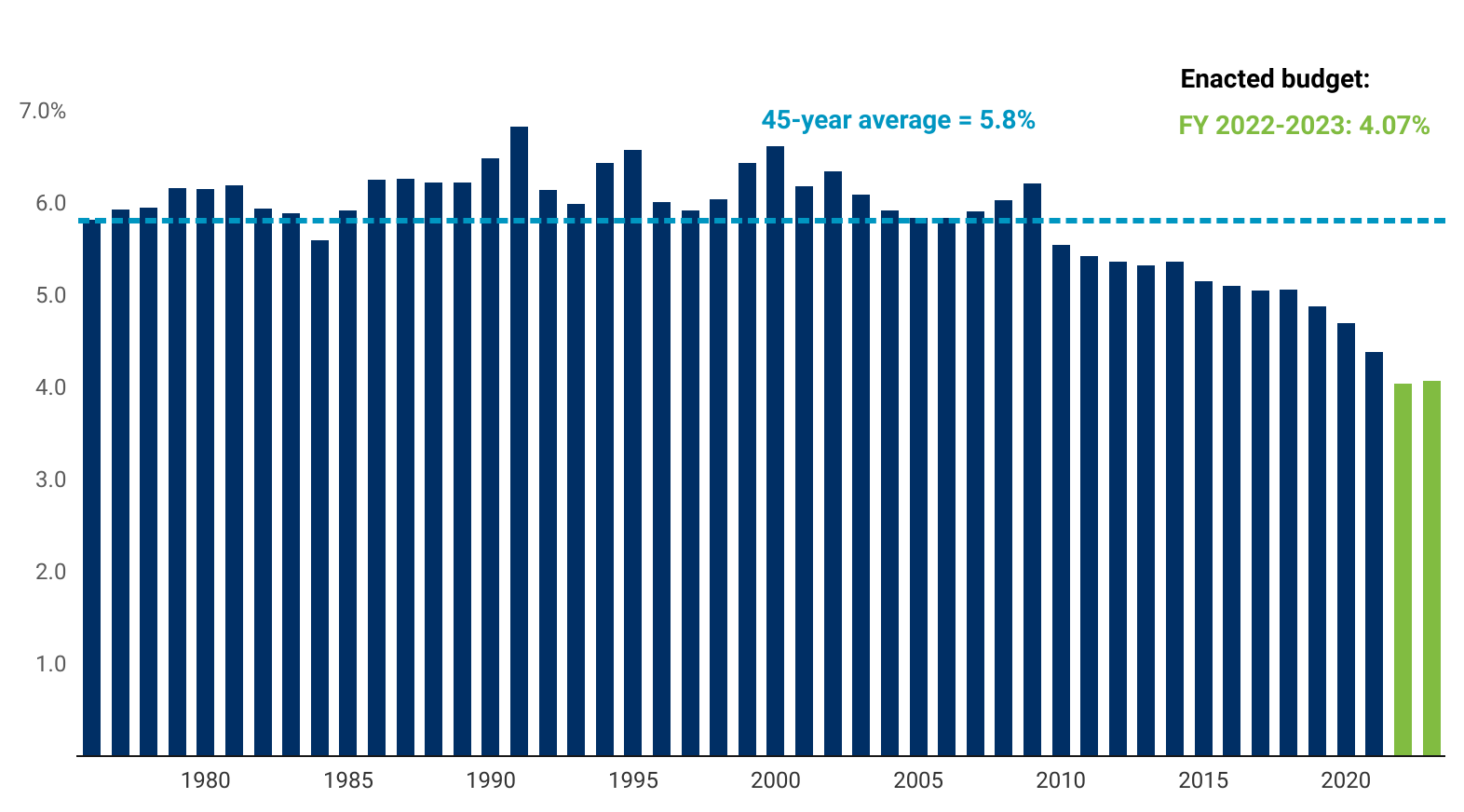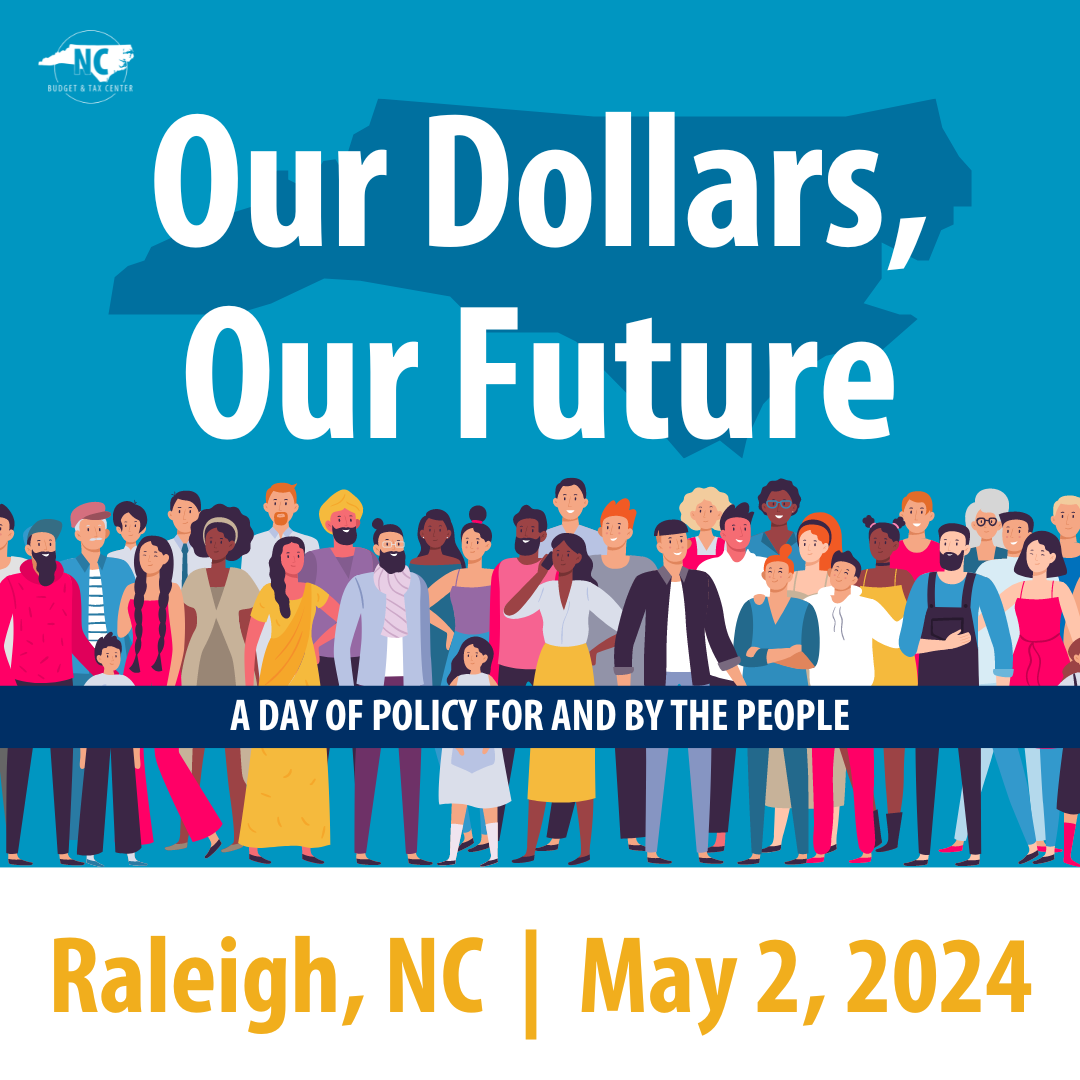
Missing the mark for North Carolina: 2022-23 state budget fails to address the many effects of inflation
Read the Executive Summary
Download a PDF of this report
Inflation isn’t just a pocketbook problem, it’s a budget problem as well. Governments feel the pinch of gas prices climbing higher, food becoming more expensive, and increased competition from private sector employers as well as most of the impacts of inflation that affect consumers and businesses. Unfortunately, the 2022-23 budget allows inflation to undermine the real level of investment that North Carolina is making in everything from K-12 education to public safety.
Budget writers didn’t need to let the real level of investment slide this year. A bump in revenues driven by federal stimulus, a faster than expected recovery, and record corporate profits meant that our state could easily have made up for the lost buying power of government funds. Instead, legislative leaders stashed billions in a variety of reserves and left vital government services unfunded.
The hammer of inflation also fell on public servants, pushing many out of their jobs and into the private sector. The modest pay raises for state employees and teachers failed to keep up with inflation and resulted in a real pay cut. Many public servants left for better paying opportunities, unsurprising in a tight labor market, which contributed to severe staffing shortages in schools, correctional facilities, and many other parts of state government.
These shortcomings go beyond political ideology. If budget writers had started with a clear understanding of what it would take to continue existing services in the context of rapid inflation and had provided more space for real public debate, some of these inadequacies could have been brought to light. Instead, the budget was developed behind closed doors and passed within a few days of becoming public without any opportunity for any amendments whatsoever.
The upshot is a budget that allows public services to erode and doesn’t meet the cardinal economic challenge of the current moment.
Real investment fell
After years of cutting services and handing out tax cuts to rich people and profitable corporations, the 2022-23 budget further erodes the level of investment in most key areas of the budget. Budget writers touted some nominal increases in funding, but once the level of inflation that happened over the last year is factored in, the real level of investment is lower than the already depressed level in last year’s budget.
General Fund spending remains at historic lows
The budget for FY 2022-2023 totals $27.9 billion, which represents a nominal increase (before adjusting for inflation) over the previous year’s budget total of $25.9 billion. As shown below, the real level of investment — considering the high rate of inflation over the last year — is actually lower than what was appropriated for the last fiscal year. The enacted budget also represents a nominal increase from the initial level of spending approved in the two-year budget enacted last year, which set out a spending plan of $27.0 billion.
Put in the context of spending compared with the size of the state’s economy over the past several decades, these numbers tell a complex story. FY 2023 spending represents 4.07 percent of the economy, which has grown substantially since the COVID-19 pandemic and economic downturn began. In comparison, the historical average spending level as a share of the economy over 45 years is 5.8 percent. To put these percentages in the context of today’s spending, North Carolina would need to spend approximately $11.7 billion more than the current spending level in order to reach the historical average. This is because spending has reached an all-time low while the state’s overall economy is booming.
Spending this additional funding to reach the historical average would bring state appropriations up to nearly $40 billion, a 42 percent increase over actual appropriations. This would require rolling back tax cuts that have been enacted since 2013 and that have eroded the state’s revenue and held down spending to the detriment of North Carolina communities across the state.
Real appropriations for most budget areas fell
Numbers without context are dangerous things. If you just looked at raw numbers on a page, it appears as though the General Assembly increased appropriations across most parts of the budget, but that would be a mistake. Given the level of inflation over the last year, the real buying power of the amount that legislative leaders appropriated for 2022-23 went down — sometimes by a lot.
The real buying power of General Fund appropriations dropped by about $455 million compared with the amount spent in the last fiscal year. Drilling down, most major sections of the general fund received less real investment for FY 2022-23 than they received last year. Health and Human Services was the only area where real investment increased, in part, because federal standards require inflation to be factored into annual appropriations. Education was down $420 million, most of which came in reductions to real appropriations for K-12 education. Protections for our communities also went down as Justice and Public Safety funding decreased by almost $190 million, and our investments in Natural and Economic Resources slid by about $55 million.
Stashing billions in reserve when pressing needs exist now
The choice to let real investment fall is all the more baffling given the amount of money that budget writers had at their disposal. Federal stimulus, which fueled a faster than expected economic recovery, meant state revenues came in billions of dollars over expectations. Instead of spending those funds to address pressing needs in our state, legislators chose to sideline more than $4 billion through a variety of reserves.
Almost half of funds allocated to reserves are not set to be spent in current fiscal year
It’s important to distinguish between reserves that will be spent this year and reserves that truly take funds off the table until future legislative action. Some of the reserves created or used this year could be considered closer to traditional appropriations but are being funneled through reserves. The $205 million Housing Reserve channeled for a specific project in Dare County, for example, easily could have been appropriated as a normal earmark as is often done for specific local projects. As such, it’s useful to look at which funds really are being sidelined and how much will be spent to get a real sense of what could have been available for other General Fund appropriations.
All told, nearly $5 billion of the funds allocated to reserves actually were appropriated for use in the 2022-23 fiscal year.1Fiscal Research Division, “NCGA 2022 Legislative Session Budget and Fiscal Policy Highlights,” 2022, chrome-extension://efaidnbmnnnibpcajpcglclefindmkaj/https://sites.ncleg.gov/frd/wp-content/uploads/sites/7/2022/08/2022_Budget_Brief_Final_2022_08_30.pdf. The single largest portion is through the State Capital and Infrastructure Fund (SCIF), a reserve designated for infrastructure projects like airports, parks, and state-owned buildings. Of the $3.2 billion channeled into the SCIF, $2.9 billion was appropriated for use in the current fiscal year, bringing the biennial total transfer to SCIF up to $6.8 billion. In addition to transfers to the Savings Reserve and SCIF, the General Assembly made many additional allocations for specific purposes, including inflation stabilization, economic development, water infrastructure, and housing. While setting aside funds to address inflation appears to be a prudent budgeting decision, it’s unclear yet under what circumstances legislative leaders would authorize the use of those funds, given legislators’ past reticence to use dedicated reserve funds for authorized uses and their lack of clarity about permissible uses of this latest reserve.
History of allocations to reserves – including inflation reserve
The current budget extends a trend of siphoning off more revenue and using reserves to fund needs that could, and in some cases probably should, be appropriated through the General Fund. The last two budgets have seen an explosion in both the amount of funds going to reserves and the number of reserves. Although some of the reserves, such as the Savings Reserve, have requirements laid out in statute that determine how funds must be used and replenished, most of the reserves are funded from the General Fund through transfers at the discretion of the General Assembly.
In recent years, reserves have been created for a number of purposes, including contingency funds due to cost uncertainty, reserves administered by a state agency to direct funds for a specific purpose, and a general type of fund that may or may not be appropriated by the General Assembly in the same budget that authorizes the reserve transfer.
Funds also are set aside into reserves for the purposes of responding to climate disasters that already have happened, such as Hurricane Florence, and possible future disasters such as the Earthquake Recovery Reserve.
In the case of the Medicaid transformation reserve, for example, funds are made available to help cover the cost of North Carolina’s legislatively mandated transition to Medicaid Managed Care. Similarly, the Medicaid Contingency Reserve was created to help cover the cost of the Medicaid program, which is subject to uncertainty as enrollment, cost of care, and use shift over time.
Uncertainty around these funds could be addressed with appropriations rather than reserves, but these funds primarily serve the purpose of providing contingency funds.
An increasing swath of reserves have been created in recent years to provide funds for specific line-item appropriations, which often are made in the same budget bill. In the most recently enacted budget, this was done with the Housing Reserve, Local Project Reserve, and Retiree Supplement Reserve, as well as the vast majority of SCIF.
The final type of reserve that the NC General Assembly has created and funded over the past six fiscal years are reserves to fund programs administered by state agencies. In recent years, these have included the Clean Water and Drinking Water Reserve and the Growing Rural Economies with Access to Technology (GREAT) Program. Both of these reserves make funds available for grants to local governments and other local entities with the process and applications administered primarily by state agencies.
Savings reserve hits an all-time record
The General Assembly appropriated additional funds to the Savings Reserve (aka Rainy Day Fund) well above the level required by law. By diverting an additional $500 million on top of what was already designated for the Rainy Day Fund in last year’s budget, the fund is set to grow by $1.6 billion, bringing the balance to an all-time record of $4.75 billion.2Fiscal Research Division, “NCGA 2022 Legislative Session Budget and Fiscal Policy Highlights.”
Inflation reserve
Another billion dollars was set aside in a newly created “inflation reserve.” Creating a reserve to offset the potential impacts of inflation could be seen as prudent budgeting in some circumstances, but set against the realities of this budget, it makes much less sense. First of all, inflation already was running at a four-decade high when the budget was being developed, so we already knew that budgets would need to be augmented to offset the impact of inflation when the budget was passed. As will be detailed below, the real buying power in most areas of the budget went down once inflation was factored in, so at least some of these funds set aside for the inflation reserve could have been used to make up for what inflation already had taken away. Secondly, with so much money also sitting in the Rainy Day Fund and other reserves, it’s harder to justify the need for such a large additional diversion of funds.
Drop in real state wages undermines services
The last two budgets included raises for state employees, but the raises have been far below what would be needed to protect public employees from the impacts of inflation. The result is that teachers, people who fix potholes and clean bathrooms in state parks, and all the other public employees we rely on saw their real pay go down.
The failure to protect state employees from inflation is not just a problem for the people who teach our children, safeguard our communities, and make North Carolina a better place to live, it’s a problem for all of us. State government is one of the largest employers in North Carolina, so when public workers have less disposable income that impacts the businesses across our state.
Declining real pay also makes it harder to retain valuable state employees, which both undermines the quality of services and creates additional costs to replace the state employees who move on to new jobs. Analysis by Deloitte and Gallup estimates that it costs between six months and two years of salary to replace a governmental employee who leaves,3NC Office of State Human Resources, “2021 Compensation and Benefits Report,” 2022, chrome-extension://efaidnbmnnnibpcajpcglclefindmkaj/https://oshr.nc.gov/media/4822/open. so we’re going to be paying the price of not raising salaries enough for years to come.
Public employees’ real income decreased since last year
This year’s budget left state employees exposed to the pain of inflation. The modest raise that state employees got in this year’s budget has been more than wiped out by inflation, leaving them with less real income than a year ago.
The 2022-23 budget included a 1 percent across the board raise for state employees and up to 2 percent for employees whose pay is based on experience or set by state law. This comes on top of a 2.5 percent raise for the current year that was passed in the 2021 long session.4Fiscal Research Division, “NCGA 2021 Legislative Session Budget and Fiscal Highlights,” 2022, chrome-extension://efaidnbmnnnibpcajpcglclefindmkaj/https://sites.ncleg.gov/frd/wp-content/uploads/sites/7/2022/01/NCGA_2021_Legislative_Session_Budget_and_Fiscal_Policy_Highlights_2022_01_20_Final.pdf; Fiscal Research Division, “NCGA 2022 Legislative Session Budget and Fiscal Policy Highlights.” Together that means a 4.5 percent pay increase for the current year, which fully took effect on July 1. In normal times, that would be a big raise, but these aren’t normal times.
With inflation in the South running at 9.4 percent over the last year,5Bureau of Labor Statistics, “Consumer Price Index, South Region — July 2022,” 2022, https://www.bls.gov/regions/southeast/news-release/consumerpriceindex_south.htm. public workers’ raises have been more than wiped out. Someone who earned the average base pay of just over $54,000 for state employees last year would have seen their real income drop by about $2,600 once the impacts of raises and inflation were fully factored in. Up and down the pay scale, public employees who got the higher 4.5 percent raises would effectively lose more than 2.5 weeks of pay.
Compounding a longer-term trend of underpaying public servants
The loss of real income over the last year worsens a longer-term trend of public employees being left behind. The 2.5 percent raise included in the FY2021-22 budget was already behind the rate of inflation from 2020 to 2021, and state salaries have been consistently behind the cost of living for the last decade. From 2011 to 2021, the average consumer costs nationwide increased by more than 22 percent while the average base salary for North Carolina state employees only increased by 16.6 percent.6NC Office of State Human Resources, “2021 Compensation and Benefits Report.”
This lack of wage growth also has put public workers further behind their peers in the private sector. Since 2011, state salaries have fallen 15.3 percent behind the overall North Carolina labor market. This puts the squeeze on public workers’ pocketbooks and makes it harder to retain employees to do the people’s work.
Cut in real pay pushes people out of public service
We don’t need to wait to see some of the consequences of saddling public workers with a cut in real pay. At a time when communities are still trying to cope and rebuild from COVID-19, key areas of state governments are trying to deliver services with fewer bodies. From July 2021 to when the budget passed this year took effect, the total number of state employees dropped by about 5,400 (almost 7 percent). Most of those losses happened outside the university system where total employment dropped by over 8 percent.7“Analysis of NC Government Employee Statistics,” 2022, https://oshr.nc.gov/work-nc/employee-statistics.
Looking deeper, it’s clear that many public services that are valued across the political spectrum are also where some of the deepest job losses are happening. Public Safety lost over 2,400 jobs, more than 1 in 10 positions. Health and Human Services lost more than 1,600 jobs, commerce lost nearly 240 posts, and Information Technology is down over 100. All three functions have lost more than 10 percent of the workforce compared to July of last year. Although the state workforce overseeing elections is a relatively small number of total positions, that area dropped by more than 25 percent, the largest proportional decline in any one area. Job losses extended to other areas, but these workforce reductions reflect how much harder it is to deliver quality public services needed by North Carolinians in times both good and bad.
School vacancies footnotes8 “NC Has over 11,000 Vacancies in Public Schools, a Statewide Survey Finds,” WUNC, August 22, 2022, https://www.wunc.org/education/2022-08-22/nc-has-over-11-000-vacancies-in-public-schools-a-statewide-survey-finds.9“Teaching College Enrollment Has Plummeted. The NC Teaching Fellows Program Is Fueling Limited Growth.,” WUNC, July 18, 2022, https://www.wunc.org/education/2022-07-18/teaching-college-enrollment-plummeted-nc-fellows-program-fueling-growth-carolina.
Surplus likely to be temporary
As lawmakers craft their budgets, a critical resource they put to use is the information contained in the state’s consensus revenue forecast. These forecasts, developed by the state’s economists and typically released at least annually, provide an updated prediction about the amount of revenue the state’s tax code will generate in the current and upcoming Fiscal Years based on economic conditions. In other words, the revenue forecast contains the best estimate of how much money the state will have available for lawmakers to allocate in their budget.
The revenue forecast released in May 2022, shortly before the Governor and General Assembly released their respective budgets, showed greater-than-expected collection compared with the June 2021 revenue forecast — $4.2 billion for FY 2021-22 and $1.9 billion for FY 2022-23.10Fiscal Research Division, NC General Assembly, “North Carolina General Fund Revenue Consensus Forecast: May 2022 Revision,” May 9, 2022, https://sites.ncleg.gov/frd/wp-content/uploads/sites/7/2022/06/2022.05.09-Consensus-ReportWebFinalVersion.pdf. This combined, anticipated availability of revenue totaling $6.2 billion over two fiscal years, is due to multiple factors:
- Individual income tax: The economic recovery has driven up wages for many workers, particularly low wage earners, which generated higher than expected individual income tax collections.
- Sales and use tax: Many people spent savings that they accumulated during the earlier period of the pandemic, which led to higher sales tax and use tax collections.
- Corporate income tax: With federal stimulus fueling consumer demand and many consumers shifting their buying habits, record corporate profits boosted corporate income tax collections.
Better practices would create better budgets
This year’s budget didn’t drop out of a clear sky. We’ve seen several years of a trend where the tools to ensure adequate funding have been used less and less, leading to budgets with less forward-looking appreciation of the opportunities and challenges that North Carolina faces. It is also the case that many of the public budgeting practices that are hallmarks of fiscal responsibility are rarely used. Two particular tools or practices worth lifting up are the use of current service budgets to map our future and the incorporation of community input to assess impact. Public input and legislative debate have been whittled down, leaving more of the process driven by closed door discussions among only a handful of legislative leaders.
Setting a base budget to maintain current services over time
A budget is a roadmap for North Carolina’s future. It can provide the public and policymakers with a view into the full impact of policy decisions and the way residents will experience the delivery of public programs and services from day to day and over time.
Current service budgeting is one tool that supports long-term planning and transparency for the public and policymakers in the process of deciding how to spend public dollars.
Current service budgeting is “a projection of how much it will cost a state in an upcoming budget period to deliver the same quantity and quality of services to residents that it is delivering in the current budget period, taking into account factors such as inflation, expected changes in the number of people utilizing those services, any previously enacted rule changes that have not yet phased in, and ongoing formula-based adjustments.”11Elizabeth McNichol, Vincent Palacios, and Nicholas Johnson, “Budgeting for the Future: Fiscal Planning Tools Can Show the Way” (Center on Budget & Policy Priorities, 2014), https://www.cbpp.org/sites/default/files/atoms/files/2-4-14sfp.pdf.
As North Carolina experiences both high inflation and a growing population, the impact of decisions would be more clear if assessments of spending levels in any given year could be compared against what spending would be required to maintain current services in the future. It could better show the public if a year-over-year increase in spending will change the quantity or quality of services provided. If the year-over-year increase falls short of what it takes to keep up with the costs of delivering a service or serving the people of the state, then that spending decision has eroded the reach and quality of services.
To be most effective, a current service budget should:
- Make clear what assumptions are used to determine the current service baseline. This is critical for a state like North Carolina where spending targets have held down spending despite population growth and in the face of known requirements like the Leandro plan, which outlines the funds required to meet the constitutional requirement to provide a sound, basic education to every child. Published assumptions allow for independent analysis of what adjustments might be necessary for long-term planning.
- Take into account any rule changes that would phase in and affect the delivery of services. This ensures that policy changes made for the future are funded in the budget and don’t result in unfunded mandates or shifts in funding responsibilities.
North Carolina uses a base budget to present its budget to the public today. This base budget approach is used by both the Governor and the NC General Assembly and, by definition, includes some but not all of the requirements of a current service budget. In recent years, what gets counted as part of the based budget has narrowed and impacted the ability to document the impact of spending decisions on whether children have access to early childhood education opportunities, seniors have access to home health care, or workers have access to jobs training at community colleges.
From 2013 to 2014, legislators made notable changes to how the base budget would be built by removing considerations for impacts like inflation, building reserves, and equipment replacement, as well as removing requirements to keep up with increased enrollment for public schools and Medicaid.12North Carolina, “Session Law 2013,” Pub. L. No. G.S. 143C-1-1(d), 1012 (2013). 13North Carolina, “Session Law 2014,” Pub. L. No. G.S. 143C-1-1(d), 339 (2014). This means that today, policymakers don’t fund enrollment growth in public schools as part of the base budget, even as they do require the allocations to the Opportunity Scholarship program — the private school voucher program in North Carolina — be included in the base budget through 2032.14GS_115C-562.8.pdf, https://www.ncleg.gov/EnactedLegislation/Statutes/PDF/BySection/Chapter_115C/GS_115C-562.8.pdf
Moving away from a full accounting of what it would take to continue current services is one way that legislative leaders have masked the scale of underinvestment happening in areas of the budget, including education, health care, and transportation. The impact of spending is further obscured when the base budget doesn’t allow for agencies to detail out the costs and changes to services required to keep up with need in specific programs and services at the level of line-items in the budget.
North Carolina needs a more accurate baseline from which the public and policymakers can assess funding choices in a given budget against what is needed to meet the goals and experiences of people.
More community input
This year’s legislative session included a remarkably quick public-facing state budget process. Prior to the end of the state’s fiscal year on June 30, leaders in the General Assembly’s House and Senate chambers released their conference report on the state budget, and it was enacted and signed into law by the end of the same week in which it was introduced.
The first public introduction of the proposed state budget as a conference report is notable in a number of ways. First, it’s important to know that amendments cannot be made on a conference report. Instead, members of the General Assembly must vote yea or nay on the entirety of the bill. There is no opportunity for amendments or for referrals to any committee, and the conference report simply goes to each chamber for a floor vote by the entire body. Second, because conference reports don’t allow for amendments, many legislators did not have much opportunity to provide input on the contents of the state budget. This is concerning because legislators have a responsibility to serve their communities and constituents, and the absence of a window for input means that elected leaders, and by extension the needs of their constituents, are cut out of the process.
To be sure, there has not been much opportunity for meaningful dialogue and debate when it comes to crafting the state budget. As recently as last year, legislative leaders in both chambers instituted rules that fellow lawmakers must follow to introduce an amendment to the proposed committee substitute, which is an earlier draft in the budgeting process.15NC General Assembly, “Senate Appropriations/Base Budget Committee Rules for Considering Amendments,” June 2021, https://webservices.ncleg.gov/ViewDocSiteFile/35958; NC General Assembly, “North Carolina House of Representatives Appropriations Committee Rules for Considering Amendments,” August 10, 2021, https://webservices.ncleg.gov/ViewDocSiteFile/39033. These rules left little to no room for lawmakers to make recommendations for changes on the state’s funding decisions. In addition, the process provided no opportunity for the public to provide input or to understand how budgeting decisions were made in any meaningful or transparent way.
Among the steps missed that would ensure a transparent process were
- the public cataloging of needs in North Carolina and from state agencies;
- review and discussion or debate of the needs by legislative policy committees over the period of months;
- opportunity for lawmakers to put forward proposals and amendments that represent community needs;
- and the ability to review proposals with more than 48 hours’ notice.16NC Budget & Tax Center, “Dollars & Democracy: A Primer on How NC Can Build Thriving Communities,” May 18, 2022, https://ncbudget.org/dollars-democracy-a-primer-on-how-nc-can-build-thriving-communities/.
This fundamental breakdown in the budgeting process, which has happened to varying degrees in many years, reached a point this year where there was no real effort to even create the impression of public input.
Footnotes
- 1Fiscal Research Division, “NCGA 2022 Legislative Session Budget and Fiscal Policy Highlights,” 2022, chrome-extension://efaidnbmnnnibpcajpcglclefindmkaj/https://sites.ncleg.gov/frd/wp-content/uploads/sites/7/2022/08/2022_Budget_Brief_Final_2022_08_30.pdf.
- 2Fiscal Research Division, “NCGA 2022 Legislative Session Budget and Fiscal Policy Highlights.”
- 3NC Office of State Human Resources, “2021 Compensation and Benefits Report,” 2022, chrome-extension://efaidnbmnnnibpcajpcglclefindmkaj/https://oshr.nc.gov/media/4822/open.
- 4Fiscal Research Division, “NCGA 2021 Legislative Session Budget and Fiscal Highlights,” 2022, chrome-extension://efaidnbmnnnibpcajpcglclefindmkaj/https://sites.ncleg.gov/frd/wp-content/uploads/sites/7/2022/01/NCGA_2021_Legislative_Session_Budget_and_Fiscal_Policy_Highlights_2022_01_20_Final.pdf; Fiscal Research Division, “NCGA 2022 Legislative Session Budget and Fiscal Policy Highlights.”
- 5Bureau of Labor Statistics, “Consumer Price Index, South Region — July 2022,” 2022, https://www.bls.gov/regions/southeast/news-release/consumerpriceindex_south.htm.
- 6NC Office of State Human Resources, “2021 Compensation and Benefits Report.”
- 7“Analysis of NC Government Employee Statistics,” 2022, https://oshr.nc.gov/work-nc/employee-statistics.
- 8“NC Has over 11,000 Vacancies in Public Schools, a Statewide Survey Finds,” WUNC, August 22, 2022, https://www.wunc.org/education/2022-08-22/nc-has-over-11-000-vacancies-in-public-schools-a-statewide-survey-finds.
- 9“Teaching College Enrollment Has Plummeted. The NC Teaching Fellows Program Is Fueling Limited Growth.,” WUNC, July 18, 2022, https://www.wunc.org/education/2022-07-18/teaching-college-enrollment-plummeted-nc-fellows-program-fueling-growth-carolina.
- 10Fiscal Research Division, NC General Assembly, “North Carolina General Fund Revenue Consensus Forecast: May 2022 Revision,” May 9, 2022, https://sites.ncleg.gov/frd/wp-content/uploads/sites/7/2022/06/2022.05.09-Consensus-ReportWebFinalVersion.pdf.
- 11Elizabeth McNichol, Vincent Palacios, and Nicholas Johnson, “Budgeting for the Future: Fiscal Planning Tools Can Show the Way” (Center on Budget & Policy Priorities, 2014), https://www.cbpp.org/sites/default/files/atoms/files/2-4-14sfp.pdf.
- 12North Carolina, “Session Law 2013,” Pub. L. No. G.S. 143C-1-1(d), 1012 (2013).
- 13North Carolina, “Session Law 2014,” Pub. L. No. G.S. 143C-1-1(d), 339 (2014).
- 14GS_115C-562.8.pdf, https://www.ncleg.gov/EnactedLegislation/Statutes/PDF/BySection/Chapter_115C/GS_115C-562.8.pdf
- 15NC General Assembly, “Senate Appropriations/Base Budget Committee Rules for Considering Amendments,” June 2021, https://webservices.ncleg.gov/ViewDocSiteFile/35958; NC General Assembly, “North Carolina House of Representatives Appropriations Committee Rules for Considering Amendments,” August 10, 2021, https://webservices.ncleg.gov/ViewDocSiteFile/39033.
- 16NC Budget & Tax Center, “Dollars & Democracy: A Primer on How NC Can Build Thriving Communities,” May 18, 2022, https://ncbudget.org/dollars-democracy-a-primer-on-how-nc-can-build-thriving-communities/.



